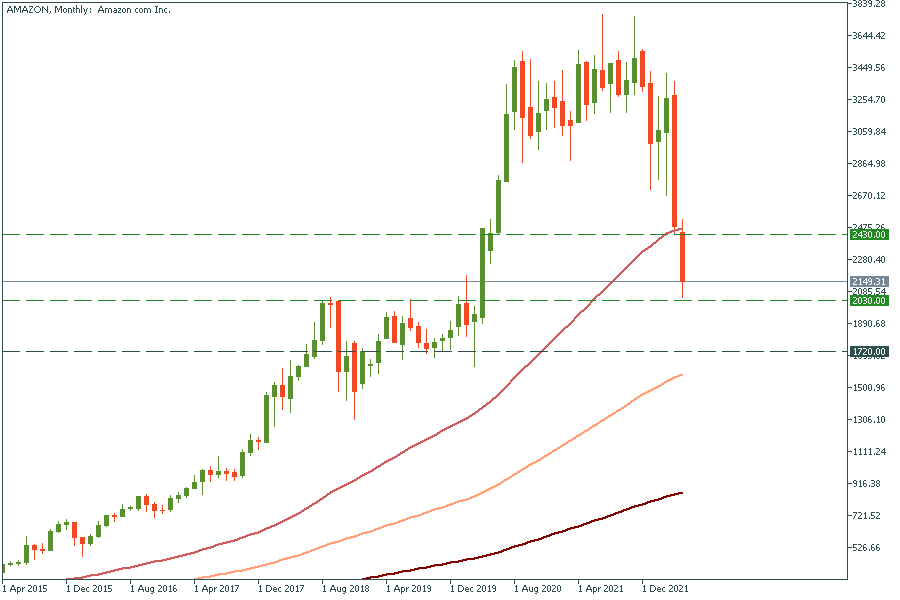
The S&P 500 had a good week due to the impressive start of Q1 earnings and favorable inflation data. In March, the consumer price index rose 5%, lower than the previous month's 6%, and met economists' expectations.
For a seamless experience, click “Redirect me.”

Don’t waste your time – keep track of how NFP affects the US dollar!
Data Collection Notice
We maintain a record of your data to run this website. By clicking the button, you agree to our Privacy Policy.

Beginner Forex Book
Your ultimate guide through the world of trading.
Check Your Inbox!
In our email, you will find the Forex 101 book. Just tap the button to get it!
Risk warning: ᏟᖴᎠs are complex instruments and come with a high risk of losing money rapidly due to leverage.
71.43% of retail investor accounts lose money when trading ᏟᖴᎠs with this provider.
You should consider whether you understand how ᏟᖴᎠs work and whether you can afford to take the high risk of losing your money.
Information is not investment advice
Amazon announced the company is going to make a 1 – 20 stock split on June 3 after the trading session close (23:30 GMT+3). Investors will receive 20 shares for each share they currently own.
The company also said the board authorized it to buy back up to $10 billion worth of shares.
Stock splits are cosmetic and don’t fundamentally change anything about the company. However, historically over 70% of companies demonstrate growth after this procedure.
There are two reasons why stocks outperform after splits:
Amazon stock is currently trading at a historically low valuation on capitalization-to-EBITDA (earnings before interest, taxes, depreciation, and amortization) and price-to-sales metrics.
Another indication that the company may be undervalued is that management is repurchasing stock, which the company rarely does. The last time it happened was in 2011, during another swoon in the stock price.
Stock splits usually lead to increased interest from retail investors, but this happens during regular periods on the stock market. Currently, the US economy might be diving into a deep recession, and it's possible Amazon shares could go lower.
However, barring that extreme scenario, a lot of bad news is priced in today.
Amazon, monthly chart

The stock lost more than 43% of its all-time high value. The price reached the historical support level of $2030. If it breaks through this level, it might plunge to $1720. However, we doubt that.
In our opinion, retail investors would love to purchase a part of such a giant company only for about $100, instead of $3000 a couple of months earlier. We believe the price will reverse at $2030 and fly towards the 50-month moving average at $2430, which is about 20% profit.
FBS analysts team believes Amazon stock is worth looking at ahead of the upcoming split due to several reasons:
Don't know how to trade stocks?

The S&P 500 had a good week due to the impressive start of Q1 earnings and favorable inflation data. In March, the consumer price index rose 5%, lower than the previous month's 6%, and met economists' expectations.

FAANG stocks started recovering. Which ones are the best according to fundamental analysis?

The previous year 2022, was undoubtedly tumultuous for the stock markets, with several stocks plummeting across multiple industries. Analysts have blamed the hard times on inflation, hawkish federal reserve policies, an impending global recession, and the ongoing crisis in Ukraine. This year, however, we're beginning to see some recovery in the stock markets. This article will find a few stocks worth buying this year.

eurusd-is-falling-what-to-expect-from-the-future-price-movement

Greetings, fellow forex traders! Exciting news for those with an eye on the Australian market - the upcoming interest rate decision could be good news for Aussies looking to refinance or take out new loans. The Mortgage and Finance Association Australia CEO, Anja Pannek, has...

Hold onto your hats, folks! The Japanese yen took a nosedive after the Bank of Japan (BOJ) left its ultra-loose policy settings unchanged, including its closely watched yield curve control (YCC) policy. But wait, there's more! The BOJ also removed its forward guidance, which had previously pledged to keep interest rates at current or lower levels. So, what's the scoop? Market expectations had been subdued going into the meeting, but some were still hoping for tweaks to the forward guidance to prepare for an eventual exit from the bank's massive stimulus
Your request is accepted.
We will call you at the time interval that you chose
Next callback request for this phone number will be available in 00:30:00
If you have an urgent issue please contact us via
Live chat
Internal error. Please try again later